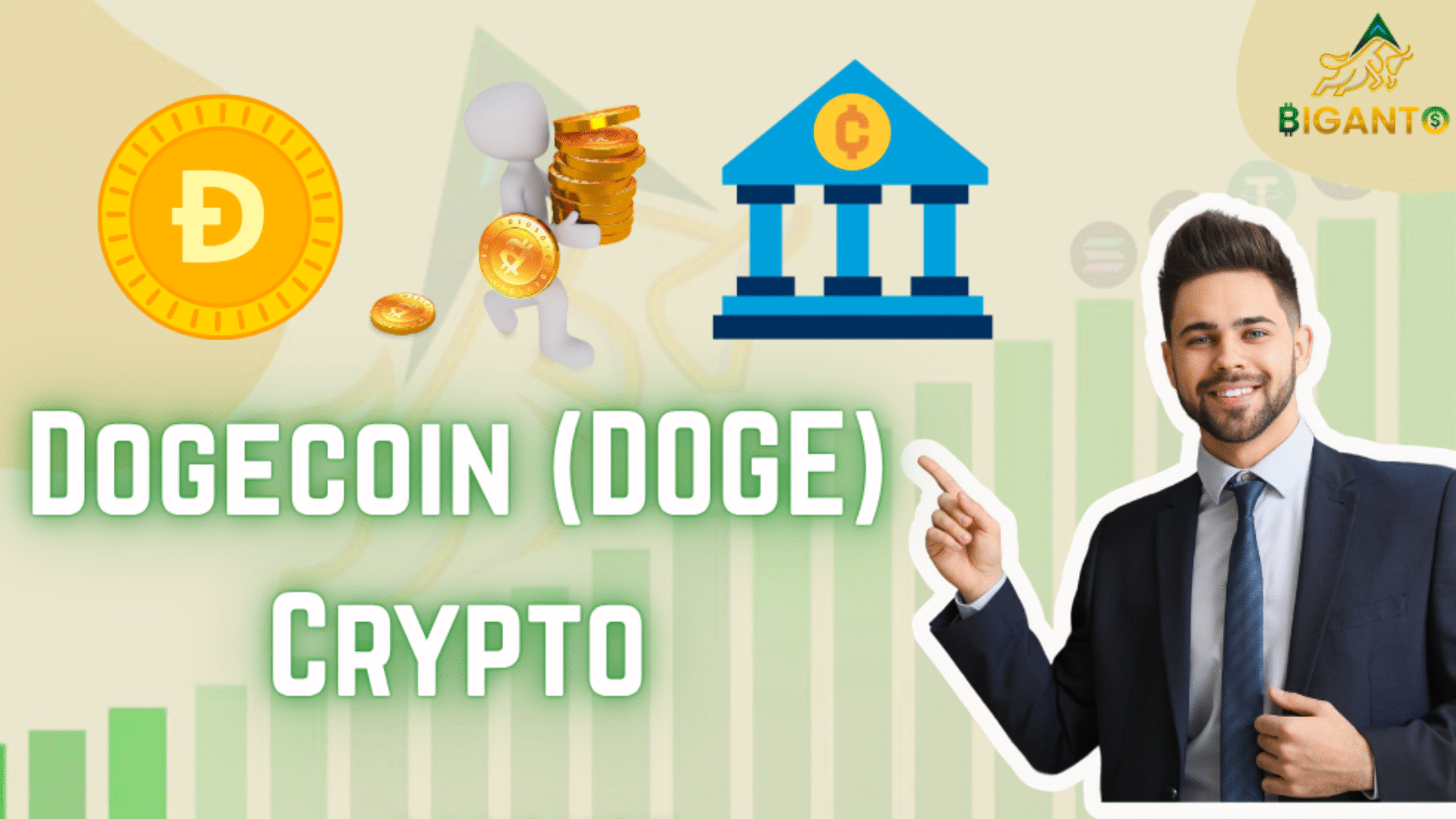Dogecoin (DOGE) started as a fun joke in the crypto world. In the beginning, people didn’t take it seriously and thought it was just a meme coin made for laughs. But over time, things changed. Dogecoin became popular, especially when big names like rapper Snoop Dogg and businessman Elon Musk started talking about it and showing support. Their tweets and comments brought a lot of attention to Dogecoin, and it quickly became one of the most talked-about cryptocurrencies in the market.
Introduction
Dogecoin is a decentralized, peer-to-peer cryptocurrency that runs on an open-source blockchain network. It allows users to send and receive money instantly with very low transaction fees, making it ideal for tipping creators online, donating to causes, or even buying goods and services from businesses that accept crypto. It’s built on the Litecoin codebase, which means it shares many features with Litecoin but processes transactions even faster.
One of the key reasons Dogecoin remains popular is its speed and affordability. Transactions are confirmed in about one minute, much quicker than Bitcoin, and the fees are so low that it’s often used for micro-transactions that wouldn’t be practical with other cryptocurrencies.
Dogecoin also stands out because of its unlimited supply. Unlike Bitcoin, which has a cap of 21 million coins, Dogecoin continues to mint 10,000 coins every minute. While this means it’s not a good option for scarcity-based value storage, it does make it more stable in terms of everyday usage.
The History and Rise of Dogecoin
Dogecoin was created on December 6, 2013. What began as a playful joke inspired by the viral Shiba Inu “Doge” meme quickly turned into one of the most talked-about cryptocurrencies in the world.
Thanks to the meme’s popularity, Dogecoin became an instant hit right after its launch. Unlike Bitcoin or Ethereum, which were often seen as serious financial tools, Dogecoin stood out for its fun and friendly approach to crypto. People started using it not just for trading, but also for tipping creators on platforms like Reddit and Twitter, helping build a strong and loyal community around the coin.
One of the biggest drivers of Dogecoin’s rise has been Elon Musk, the CEO of Tesla and SpaceX. Musk has often tweeted about Dogecoin, calling it the “people’s crypto.” His tweets — sometimes serious, sometimes in jest — have had a massive impact on Dogecoin’s price. For example, in April 2020, when he tweeted the phrase “Doge barking at the moon,” the value of Dogecoin jumped by more than 600% in just a short time.
Today, Dogecoin has a market cap of over $10 billion, and it’s no longer seen as just a meme. It’s being used for real-world payments, accepted by some major companies, and continues to have a strong, active community backing it.
How Dogecoin Works
Dogecoin works just like other cryptocurrencies, but in a much simpler and faster way. It runs on its own blockchain, which is a digital record of all Dogecoin transactions. This blockchain is public, meaning anyone can see the transactions, and it is maintained by a network of computers around the world. These computers, known as miners, confirm transactions using a process called Proof of Work.
Unlike Bitcoin, Dogecoin has no maximum supply—about 10,000 new coins are created every minute, which keeps it affordable and encourages spending.
It uses the Scrypt algorithm, which makes mining faster and more energy-efficient compared to Bitcoin. One of Dogecoin’s biggest strengths is that transactions are very fast and low-cost, making it ideal for tipping, micro-payments, and casual use.
Thanks to its simple design and friendly community, Dogecoin remains one of the most widely used and talked-about cryptocurrencies today.
Uses of Dogecoin
Dogecoin began as a fun, lighthearted cryptocurrency but has since become a useful digital currency with practical applications. One of its biggest advantages is the combination of very low transaction fees and quick processing times, making it a great choice for everyday transactions.
Many people use Dogecoin to tip creators on platforms like Reddit and Twitter, rewarding them for their content in a fast and easy way. It’s also popular for charity donations and supporting crowdfunding projects, where even small contributions can add up quickly thanks to Dogecoin’s affordability.
Beyond tipping and donations, an increasing number of businesses and online merchants accept Dogecoin as a payment method, helping the coin gain real-world value and usability. This growing acceptance means you can use Dogecoin to buy goods, services, or even tickets at some places.
Dogecoin’s speed and low fees also make it perfect for sending small amounts of money internationally without worrying about high costs or long wait times, which is helpful for personal transfers or supporting causes in different countries.
Lastly, the Dogecoin community actively backs grassroots projects and crypto initiatives, helping to expand the ecosystem and encourage wider adoption. This community-driven support plays a big role in keeping Dogecoin relevant and useful.
In summary, Dogecoin’s practical uses range from simple peer-to-peer payments and tipping, to charitable giving and commercial transactions, proving that it has grown far beyond its meme origins.
Dogecoin’s Growth
Dogecoin has seen a strong comeback in the crypto market. With big news around regulations, big investors, and government support, Dogecoin has gained more attention and trust. Here’s what’s helping its rise:
1. Integration with Online Platforms
Some e-commerce websites and tipping platforms have started adding Dogecoin as a payment option. This has increased its real-world utility, and users are now able to spend DOGE on more products, services, and subscriptions.
2. Big Players Are Buying More DOGE
Data shows that large investors (also called whales) are buying and holding more Dogecoin in 2025. According to Messari, the number of wallets holding over 1 million DOGE has gone up. This means that serious investors and possibly institutions believe Dogecoin has long-term potential—this kind of buying usually signals trust in the project.
3.Hopes of a Dogecoin ETF
In February 2025, the U.S. financial authority (SEC) started reviewing a proposal by Grayscale to launch a Dogecoin ETF—a type of investment product that would allow people to invest in Dogecoin like a stock. A final decision is expected by October 2025. Even though it hasn’t been approved yet, just the news of this review has boosted investor confidence and helped push the price up.
4. Government Showing Support for Crypto
The Trump administration has shown clear support for the crypto industry in 2025. They’ve talked about making the U.S. a global leader in crypto, and Vice President JD Vance confirmed this in a public speech. This kind of positive attitude from the government makes investors more confident about the future of cryptocurrencies, including Dogecoin.
5. Community-Led Initiatives
Dogecoin’s community is one of its strongest assets. In 2025, the community has launched several charity drives, awareness campaigns, and grassroots projects funded by DOGE donations. These activities show how Dogecoin is not just a coin, but a movement driven by people.
Should You Invest in Dogecoin?
Investing in Dogecoin depends on your financial goals, risk tolerance, and understanding of the crypto market. While Dogecoin has grown from a joke to a widely recognized cryptocurrency, it’s important to consider both its strengths and risks before investing.
Dogecoin is a cryptocurrency that started as a joke but has grown into a serious player in the crypto world. Over the years, it has gained attention for being fast, low-cost, and easy to use—features that make it appealing, especially for beginners who want to try cryptocurrency without diving straight into more expensive options like Bitcoin. Its strong online community and support from public figures like Elon Musk have further increased its popularity. For many new investors, Dogecoin offers a fun and affordable way to enter the crypto space.
However, it’s important to remember that all cryptocurrencies are risky investments, and Dogecoin is no exception. Its price can rise quickly—but it can fall just as fast. There’s no guarantee that Dogecoin’s value will always go up, and many of its price movements are based on social media trends or hype rather than solid market fundamentals. Also, when you invest in Dogecoin, you need to keep your coins in a digital wallet, which requires basic knowledge of how crypto storage works. If you’re thinking about investing, make sure to research thoroughly, understand the risks involved, and only invest money that you can afford to lose. Taking these steps will help you make smarter and safer decisions in your crypto journey.

